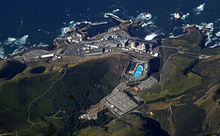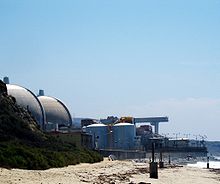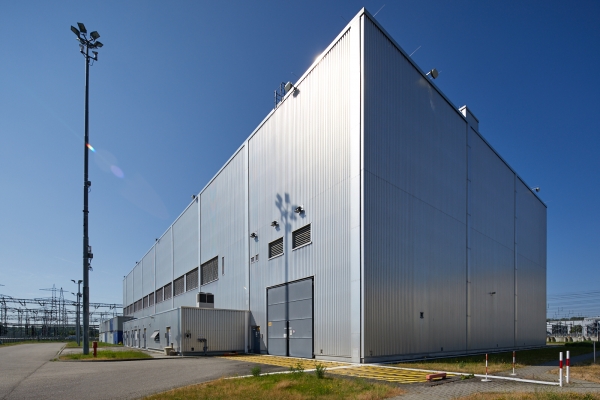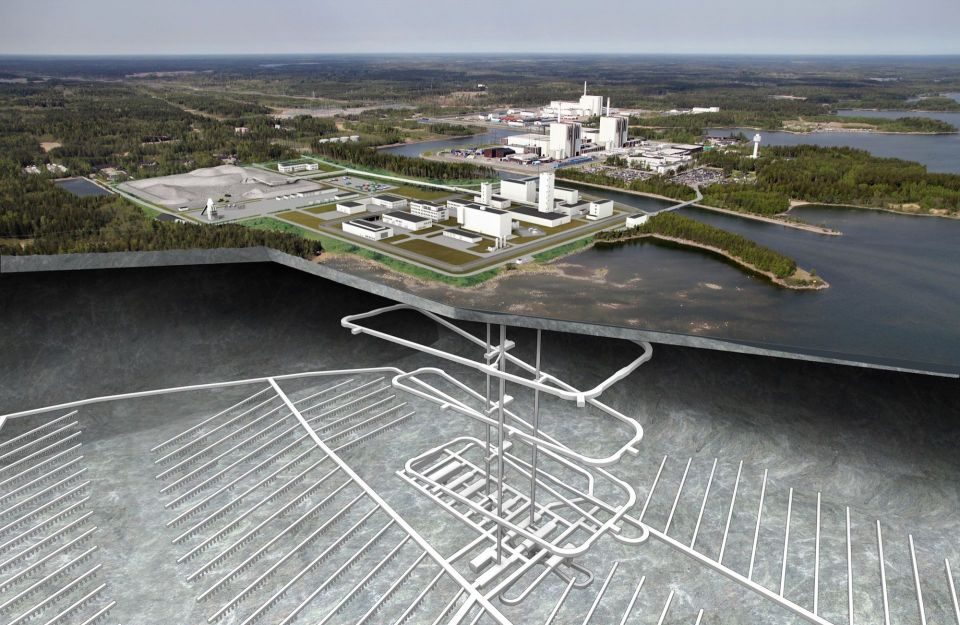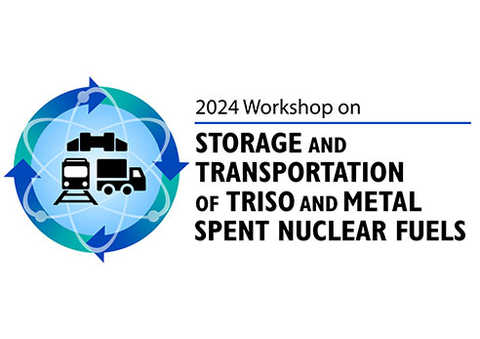Ballot initiative to close California’s nuclear plants
The Initiative
The initiative proposal has been filed by Ben Davis, a delivery driver, self-taught legal professional, and long-time anti-nuclear activist who lives in Santa Cruz, Calif. He tried (unsuccessfully) to pass a similar initiative in 1988. More than 500,000 signatures are required by April 16 in order for the initiative to qualify for the November 2012 ballot.
The language of the initiative is similar to that of previous initiatives. It would require the state's nuclear power plants to close until "there exists a demonstrated technology or means for the disposal of high-level nuclear waste." The plants in question generate 16 percent of California's electricity.
Response from Legislative Analyst
Like all of California's legislation and ballot initiatives, this proposal was evaluated by the state's legislative analyst, an objective, non-partisan office that is tasked with evaluating the impacts (economic impacts in particular) of all proposed policy initiatives. The analyst's conclusions regarding this initiative were very strong, and almost entirely negative.
The legislative analyst requested an evaluation of the impact of the plants' closure on grid stability and reliability from the states independent system (grid) operator (ISO). The ISO stated that the plants' closure "would reduce the capacity to deliver electricity in the Los Angeles Basin area to below state and local standards for reliability", and that it would significantly increase the risk of rolling blackouts in the area.
The analyst went on to say that the plants' closure could result in economic damages/costs of tens of billions of dollars to the state. These economic impacts would be due to:
- Increased cost of power in the short term due to scarcity.
- Economic costs due to blackouts and reduced reliability in the short term.
- Loss of jobs and industries due to the above power cost and lack of reliability.
- Higher power costs (and associated job losses) over the long term due to higher costs of replacement power sources.
- Cost to the taxpayer from compensation that will have to be paid to the utilities.
Other Reactions
Probably due, in part, to the very negative conclusions of the non-partisan legislative analyst, the initiative has garnered little political support (from state newspapers, etc.). No major paper has taken a position in favor of the initiative, and many papers have come down strongly against it. Even the article about the initiative in the (formally anti-nuclear) LA Times took a negative tone, focusing primarily on the negative conclusions of the legislative analyst.
Most independent observers believe that the initiative has little chance of passing.
My Perspective
It's clear that Mr. Davis is filing this initiative (again) in response to the event at the Fukushima plant in Japan last March. He believes that this will increase his chances of passing an initiative that he has failed to pass before.
Initiative's Purpose?
I find it ironic, and telling, that the initiative itself does not talk about nuclear plant safety features at all, but instead only refers to the waste issue, even though it is trying to take advantage of Fukushima fears. It does not require the plants to install any safety upgrades (e.g., earthquake and/or tsunami defenses) as a condition for being allowed to operate. It only requires that the waste problem be resolved.
Perhaps this is because Mr. Davis knows that the waste requirement will not be met for decades, whereas the plants would be able to install any required safety improvements and restart. Thus, the waste requirements are better if your real goal is to permanently shut the plants. Perhaps the waste issue is the real reason Mr. Davis is opposed to nuclear power, and the initiative language reflects that. In any event, it seems clear that the initiative is trying to use the Fukushima event in pursuit of another agenda.
California Plants' Safety
As for the actual safety of the California plants, it should be noted that the earthquake and tsunami risks at the California plant sites are nothing like those that existed for the Fukushima plant. The Diablo Canyon plant sits on a high bluff, 85 feet above the water. The San Onofre plant sits 50 feet above the water, with a 30-foot tsunami wall for additional protection. Thus, neither plant would have been inundated by a tsunami as high as the one that struck Fukushima. As for earthquakes, the California plants are actually designed to withstand ground acceleration levels roughly twice those that were experienced by the Fukushima plant.
In addition to the greater levels of protection (discussed above), the maximum earthquake and tsunami that could occur at the California plant sites is far smaller than that which occurred in northern Japan. The (thrust) type of fault that can produce earthquakes and tsunamis of that size does not exist near Southern California. Furthermore, California has relatively few off-shore fault lines that could produce tsunamis.
Finally, some of the issues and weaknesses that apply for the old boiling water reactor plants at Fukushima are less severe or not applicable to the more modern pressurized water reactor plants in California. On top of that, the U.S. plants had already made several safety and security upgrades in response to September 11, and will make further upgrades as a result of the lessons learned from Fukushima. All this adds up to a severe release risk that is much smaller than that which was present at Fukushima.
Economic Impacts of Plants' Closure
I concur with the legislative analyst's conclusions regarding the impact of closing California's two nuclear plants, but I believe that they do not go far enough. I believe that there would be additional negative impacts that the analyst failed to mention, or clarify.
The analyst was right about the short term (scarcity) costs and blackout risks, but it failed to clarify the magnitude of the impact on long-term power costs. Continuing to operate an existing nuclear plant is extremely inexpensive, with going-forward operational costs of ~2 cents/kW-hr or less. Building and operating new natural gas and/or renewable generation (to replace the nuclear plants' output) would be much more expensive. These costs will be passed down to consumers in the form of higher power costs, and tax bills related to compensation the state will have to pay the utilities (for forcing them to close perfectly good nuclear plants with decades of life left).
Whereas continued operation of the nuclear plants costs ~2 cents//kW-hr, construction and operation of renewable sources will cost ~10 cents/kW-hr or more, even before costs related to grid upgrades and fossil backup capacity are considered. New natural gas generation may cost somewhat less (6-7 cents/kW-hr) in theory, it may not be that simple in practice.
 A RAND Corporation study was performed to evaluate the impact of California's Renewable Portfolio Standard policies. The study concluded that the renewables could reduce overall energy costs even though their per kW-hr generation costs were higher than that of natural gas plants. The reasoning was that the cost of gas is very sensitive to the balance between supply and demand. Thus, any reduction in gas demand (for power generation) would result in a reduced cost for gas, which in turn would reduce the cost of the (remaining) gas-fired power generation, as well as the cost of all other applications that use gas (e.g., space heating, industrial use, etc.). Another argument they gave was that the gas pipelines into California were near their limit, and therefore any measure that would reduce or avoid any further increase in gas use could prevent a large cost associated with upgrading the pipeline infrastructure.
A RAND Corporation study was performed to evaluate the impact of California's Renewable Portfolio Standard policies. The study concluded that the renewables could reduce overall energy costs even though their per kW-hr generation costs were higher than that of natural gas plants. The reasoning was that the cost of gas is very sensitive to the balance between supply and demand. Thus, any reduction in gas demand (for power generation) would result in a reduced cost for gas, which in turn would reduce the cost of the (remaining) gas-fired power generation, as well as the cost of all other applications that use gas (e.g., space heating, industrial use, etc.). Another argument they gave was that the gas pipelines into California were near their limit, and therefore any measure that would reduce or avoid any further increase in gas use could prevent a large cost associated with upgrading the pipeline infrastructure.
Well, what's good for the goose (renewables) is good-or perhaps even better-for the gander (nuclear). If the two nuclear plants are shut down, most of the generation will be replaced by gas-fired generation. This will result in a significant increase in demand for natural gas in California, which will in turn measurably increase the price of gas. If the new level of gas demand is beyond the capacity of the existing gas pipeline infrastructure, the economic impacts will be even greater. This will have a significant effect on the overall economy.
Employment Impacts
The legislative analyst talked about job losses as a result of higher power costs and reduced reliability, and their impacts on electricity-using industries. They did not, however, sufficiently discuss employment impacts in the power generation sector itself.
The plants' closure will have a significant, negative jobs impact, particularly in the local area around the plants. Any new gas or renewable generation used to replace the plants' capacity will not create as many jobs as those lost at the plant; not in California, anyway.
Gas-fired power plants employ far fewer people, for a given level of capacity. Most of the cost of gas generation is in the fuel, and therefore many if not most of the jobs associated with gas generation are those associated with fuel extraction and transport. These jobs, however, occur elsewhere in the country, or in other nations.
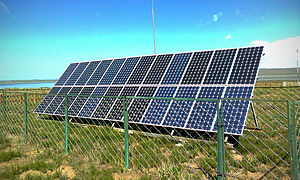 A similar (jobs) situation exists for renewables. Most of the cost, and jobs, associated with renewable generation is in the fabrication of the wind turbines and solar panels, etc. Relatively few are employed at the generation site. Suffice it to say that such jobs are offshore-able (unlike the jobs at the nuclear plant). These components can be manufactured anywhere; in other states or even other countries. In fact, it is well known that most renewable component construction has been moving to China.
A similar (jobs) situation exists for renewables. Most of the cost, and jobs, associated with renewable generation is in the fabrication of the wind turbines and solar panels, etc. Relatively few are employed at the generation site. Suffice it to say that such jobs are offshore-able (unlike the jobs at the nuclear plant). These components can be manufactured anywhere; in other states or even other countries. In fact, it is well known that most renewable component construction has been moving to China.
With nuclear power, on the other hand, most of the jobs are associated with on-site plant construction and plant operation, both of which occur in the local area. Nuclear plant jobs are not offshore-able. Local (or state) employment, per unit of generation, are much higher for nuclear than they would be for either gas or renewables.
Environmental Impacts
In addition to higher power costs, the retirement of California's nuclear plants will have a significant negative impact on the environment and public health. In the short-term, the nuclear plants' capacity will be replaced by firing up old, relatively dirty fossil (gas, and perhaps oil) fired power plants. These plants will emit significant amounts of CO2 and other harmful pollutants. Over the longer term, new and more efficient combined cycle gas plants may be constructed, but even those plants will emit significant amounts of CO2 and measurable amounts of air pollution. This will significantly impact California's ability to meet its CO2 emissions reduction goals.
It is unlikely that the nuclear plants' closure will result in a significant amount of additional renewable generation. This is because the amount of renewable generation that will be built in California is almost entirely governed by the state's aggressive Renewable Portfolio Standard requirements. Many, including myself, believe that the (33 percent) renewable generation goal is already unrealistic and impractical. Given this, it seems pretty clear that utilities will struggle to meet those requirements, and will not be building any renewable capacity beyond what is required by the policy. The closure of the nuclear plants will do nothing to change this. Getting one third of overall generation using intermittent sources is probably already beyond what can be done (practically, let alone economically). Even with the increased gas costs that occur as a result of the nuclear plants' closure, it will not be economic to build renewable generation beyond the state's requirements. Thus, it seems clear that most if not all of the generation used to replace the nuclear plants will be gas-fired.
Summary
The proposed initiative to close California's nuclear power plants (until the nuclear waste problem is "solved") is an attempt by a long-time anti-nuclear activist to take advantage of the Fukushima event to further a pre-existing agenda. It does not acknowledge the fact that overall risks, particularly risks associated with earthquake and tsunami, are much smaller for the California plants. The initiative does not even require, or refer to, plant safety upgrades to further reduce these vulnerabilities.
Closure of California's nuclear plants would have very large negative economic impacts on the state, as well as significant negative impacts on public health and the environment (due to the firing up or construction of fossil fuel power plants for replacement power). Power costs will rise significantly, and taxpayers will be on the hook for billions of dollars of utility compensation. Over the short term, grid reliability will suffer, and the risk of rolling blackouts will increase significantly. The plants' closure will also result in the loss of thousands of non-offshore-able jobs in the local area. These job losses will not be offset by jobs associated with (gas or renewable) replacement generation. The plants' closure will also make it much harder for California to meet its CO2 emissions reduction goals.
This initiative does not deserve serious consideration, let alone passage. Fortunately, most experts believe its chances of passage are slim.
________________________________________
Jim Hopf is a senior nuclear engineer with more than 20 years of experience in shielding and criticality analysis and design for spent fuel dry storage and transportation systems. He has been involved in nuclear advocacy for 10+ years, and is a member of the ANS Public Information Committee. He is a regular contributor to the ANS Nuclear Cafe.



